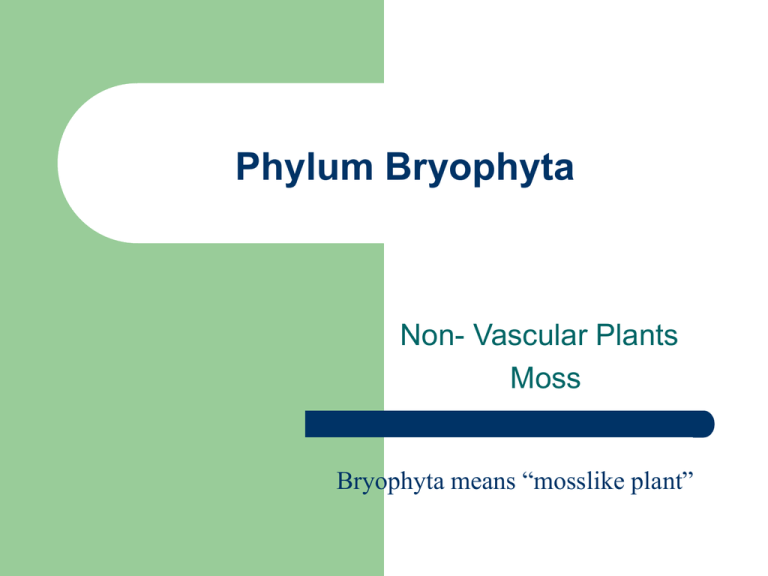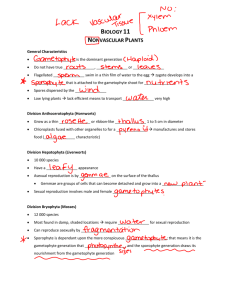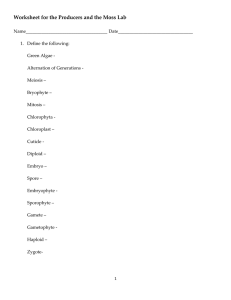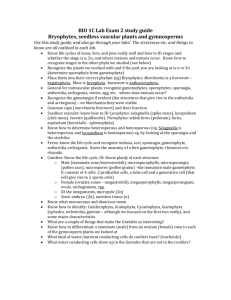Phylum Bryophyta Non- Vascular Plants Moss Bryophyta means “mosslike plant”
advertisement

Phylum Bryophyta Non- Vascular Plants Moss Bryophyta means “mosslike plant” Not really moss: Irish moss (algae) Reindeer moss (lichen) Spanish moss (flowering plant) Parts of a moss plant Rhizoids Leafy Shoot Life Cycle of Moss Life Cycle of Moss Alternation of Generations •Sporophyte Generation: produces spores (asexual) •Gametophyte Generation: produces gametes (sexual) Life Cycle of Moss Gametophyte Generation 1. The top of the male gametophyte bears the antheridia which produces sperm 2. The top of the female gametophyte has one or more archegonia which contains the ova 3. Sperm swim from the antheridia to the archegonia and fertilizes an ovum (zygote) Life Cycle of Moss Sporophyte Generation 4. Zygote grows into a stalk with a capsule which produces spores 5. When mature the cap comes off and spores disperse 6. Spore grows when environmental conditions are right 7. First grows into a cellular filament called a protonema 8. Protonema then forms the leafy shoots and rhizoids Life Cycle of Moss Protonema Moss Moss Capsule Liverworts “Liver Plant” Marchantia – a common liverwort with a y-shaped thallus Have splash platforms which look like little umbrellas Benefits of Mosses • Help to replenish the soil • Help to prevent soil erosion • Peat moss or Sphagnum is used by gardeners to pack plants for shipment and in Iceland and other northern regions it is used as fuel • Has been used for surgical dressing







